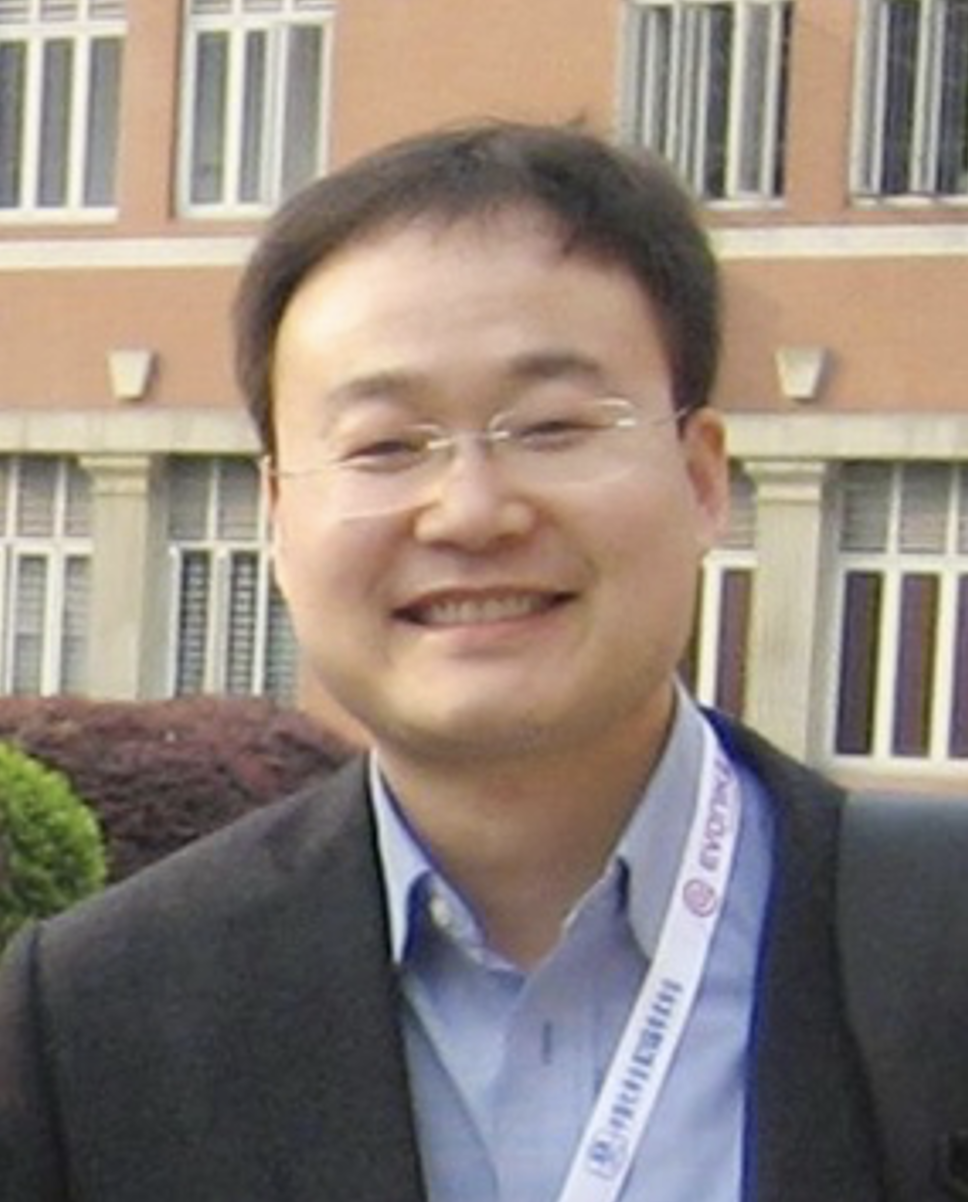
Prof. Liangti Qu
Department of Chemistry
Tsinghua University
Beijing, China
Phone: 86-10-62780569
E-mail: lqu@mail.tsinghua.edu.cn
Qu’s research areas focus on materials and energy chemistry, involving the controllable preparation and assembly of structure-specific materials, and their applications in advanced functional materials, high-performance energy conversion and storage.
Dr. Qu has been published more than 460 SCI papers in top - tier international journals such as Science, Nature, Nature Nanotechnology, Nature Water, Science Advances, Nature Communications, Advanced Materials, JACS, Angewandte Chemie, Energy Environmental Science, etc. Dr. Qu’s research achievements have been featured in prestigious scientific journals, including Nature, and the papers have been cited over 47,000 times with the highest single-paper citation over 3,000 times. Dr. Qu has a H index of 112, and has been invited to contribute more than 50 review articles to renowned journals such as Nature Reviews Materials, Accounts of Chemical Research, and Chemical Reviews.
Academic Career:
2019- Professor, Department of Chemistry, and Department of Mechanical Engineering, Tsinghua University, China
2009-2019 Professor, School of Chemistry and Chemical Engineering, Beijing Institute of Technology, China
2004-2009 Research Assistant Professor, University of Dayton, USA
2001-2004 Ph.D., Tsinghua University, China
1998-2001 M.Sc., Dalian University of Technology, China
1994-1998 B.Sc., Jinan University, China
Awards & Honors:
• Fellow of the Chinese Chemical Society, 2023
• Experts accredited by the State Council with special allowances, 2023
• Principal Investigator of the Key Project of the National Natural Science Foundation of China, 2020
• Chief Scientist of the National Key Research and Development Program, 2017
• Leading Talents in Scientific and Technological Innovation of the "Ten Thousand Talents Program" 2016
• The Second Prize of the National Natural Science Award, 2016
• The First Prize of the Natural Science Award of the Ministry of Education, 2015
• Distinguished Professor of the Changjiang Scholars Program of the Ministry of Education, 2014
• Young Leading Talents in Scientific and Technological Innovation of the Ministry of Science and Technology, 2014
• National Science Fund for Distinguished Young Scholars, 2013
• New Century Excellent Talents in University, 2009
• Winner of the Fok Ying Tong Foundation Fund, 2009
Research Fields and Interests:
Our research is involved in advanced functional materials, micro/nanomanufacturing, and new energy.
(1) Advanced material preparation (e.g., graphene, functional polymers, carbon nanomaterials, intelligent responsive materials)
(2) Micro/nanomanufacturing (e.g., molecular/nano level material design, nanochemistry, electrochemistry, micro/nanoassembly, laser micro/nano manufacturing)
(3) New energy (e.g., power generation, batteries/capacitors, flexible electronics and micro/nano energy devices, seawater desalination)
Selected publications (>300 publications, >30000 citations):
1. Deformation-tolerant, wireless charging microbatteries for seamlessly integrated omnidirectional stretchable electronics, Science Advances, 2025, 11, eads6892.
2. Separator with high ionic conductivity enables electrochemical capacitors to line-filter at high power, Nature Communications, 2025, 16, 2772.
3. Sustainable moisture energy, Nature Reviews Materials, 2024, 9, 722–737.
4. Temperature- adaptive dual-modal photonic textiles for thermal management, Science Advances, 2024, 10, eadr2062.
5. Evaporate-casting of curvature gradient graphene superstructures for ultra-high strength structural materials, Nature Communications, 2024, 15, 5917.
6. Moisture-enabled self-charging and voltage stabilizing supercapacitor, Nature Communications, 2024, 15, 4929.
7. One-step conversion of biomass to reduced graphene oxide at room temperature, Nature Sustainability, 2024, 7, 1699–1708.
8. A high-response-frequency bimodal network polyacrylate elastomer with ultrahigh power density under low electric field, Nature Communications, 2024, 15, 9819.
9. Ultralow-resistance electrochemical capacitor for integrable line filtering, Nature, 2023, 624, 74–79.
10. Multifunctional solar water harvester with high transport selectivity and fouling rejection capacity, Nature Water, 2023, 1, 982–991.
11. Laser maskless fast patterning for multitype microsupercapacitors, Nature Communications, 2023, 14, 3967.
12. The role of oxygen-vacancy in bifunctional indium oxyhydroxide catalysts for electrochemical coupling of biomass valorization with CO2 conversion, Nature Communications, 2023, 14, 2040.
13. Multistage coupling water-enabled electric generator with customizable energy output, Nature Communications, 2023, 14: 5702.
14. Superelastic graphene aerogel-based metamaterials, Nature Communications, 2022, 13:4561.
15. Transfer learning enhanced water-enabled electricity generation in highly oriented graphene oxide nanochannels, Nature Communications, 2022, 13: 6819.
16. Moisture adsorption-desorption full cycle power generation, Nature Communications, 2022, 13:2524.
17. Fast constructing polarity-switchable zinc-bromine microbatteries with high areal energy density, Science Advances, 2022, 8, eabo6688.
18. Fixture-free omnidirectional prestretching fabrication and integration of crumpled in-plane microsupercapacitors, Science Advances, 2022, 8, eabn8338.
19. Enabling fast-charging selenium-based aqueous batteries via conversion reaction with copper ions, Nature Communications, 2022, 13:1863
20. A reconfigurable and magnetically responsive assembly for dynamic solar steam generation, Nature Communications, 2022, 13, 4335.
21. Aqueous hybrid electrochemical capacitors with ultra-high energy density approaching for thousand-volts alternating current line filtering, Nature Communications, 2022, 13, 6359.
22. Bilayer of polyelectrolyte films for spontaneous power generation in air up to an integrated 1,000 V output, Nature Nanotechnology, 2021, 16, 811–819.
23. A seamlessly integrated device of microsupercapacitor and wireless charging with ultrahigh energy density and capacitance, Nature Communications, 2021, 12:2647
24. Laser photonic-reduction stamping for graphene-based micro-supercapacitors ultrafast fabrication, Nature Communications, 2020, 11, 6185.
25. Arbitrary waveform AC line filtering applicable to hundreds of volts based on aqueous electrochemical capacitors, Nature Communications, 2019, 10: 2855.
26. Plant leaves inspired sunlight-driven purifier for high-efficiency clean water production, Nature Communications, 2019, 10: 1512.
27. Interface-mediated hygroelectric generator with an output voltage approaching 1.5 volts, Nature Communications, 2018, 9, 4166.
28. Highly efficient solar vapour generation via hierarchically nanostructured gels, Nature Nanotechnology, 2018, 13, 489–495.
29. Graphene-Based Functional Architectures: Sheets Regulation and Macrostructure Construction toward Actuators and Power Generators, Accounts of Chemical Research, 2017, 50 (7), 1663–1671.
30. Graphene-based smart materials, Nature Reviews Materials, 2017, 2, 17046.
31. Metal-Free Catalysts for Oxygen Reduction Reaction, Chemical Reviews, 2015, 115(11), 4823–4892.
32. Carbon nanotube arrays with strong shear binding-on and easy normal lifting-off, Science, 2008, 322, 238–242.